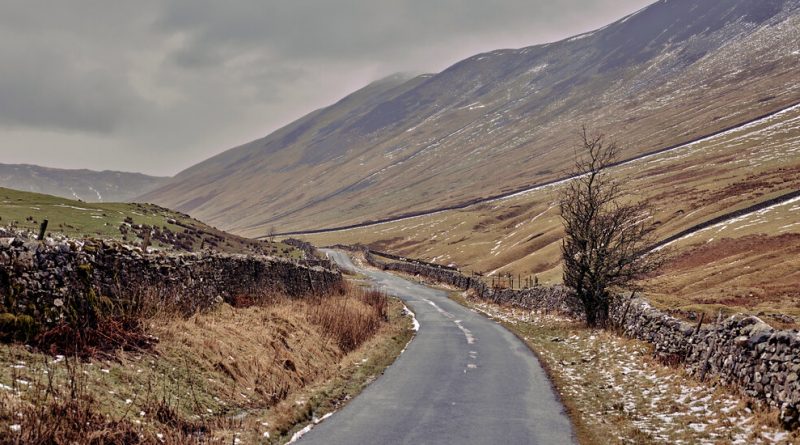‘All Creatures Great and Small’ and the Yorkshire Dales
[ad_1]
“All Creatures Great and Small” charmed viewers with its pastoral setting in Britain’s Yorkshire Dales. Here, the show’s production designer explains the eternal appeal of the region’s landscapes.
“All Creatures Great and Small,” a new adaptation of the James Herriot books, follows the gentle adventures of a veterinarian in Yorkshire, in northern England. Filmed in the same area, the first season — which ended Sunday and is available to stream at PBS.org and Amazon — was a pandemic-era hit thanks partly to the pastoral escapism it offered shut-in viewers. Here, Jacqueline Smith, the production designer, discusses the landscape and what it brings to the series. (As told to Jennifer Vineyard.)
Parts of Britain are extremely old, and some buildings and cottages look the same as they did hundreds of years ago; sometimes it’s a bit like living in a museum. It’s retained that charm, especially in the Yorkshire Dales. Yorkshiremen always call this “God’s own country.” I grew up here, and people from Yorkshire often think that they would like to have independence from the rest of the country because they see it as a separate country in itself.
The town where James Herriot lived is called Thirsk; it’s a bit farther east from where our production is based. To the east of Thirsk is the North Yorkshire Moors, and to the west, the Yorkshire Dales. Both are national parks. We chose to shoot in the Dales because we felt it looked more photogenic and less bleak than the Moors.
Because Britain is a little island, essentially, the weather is just so unpredictable. The clouds will break over the hills, and you’ll get a little rainfall. The winds will whistle down the valleys, which we call the dales, and even if the temperature is kind of reasonable, it will feel a lot colder.
Those extremes of the weather and landscape are reflected in James Herriot’s stories. Sometimes, they’re very sad, dealing with death, grief, extreme poverty and hardship, but then also dealing with new life, love and all the things that might make life worth living. It can be quite harsh on the moors, but equally, it can be absolutely magical when the sun breaks through. You can’t have one without the other.
In the show, Helen Alderson (played by Rachel Shenton) is aspirational. Back in the 1930s, farming was very much a male world. The farmer’s wife would cook in the kitchen and look after the poultry or small animals but not be very involved in the workings of the farm. Now female farmers are more prevalent.
Keeping sheep is hard work; you can’t just leave them and hope for the best. You’ll see the sheepdogs moving them around or perched on the back of the quad bikes with the shepherds. How those dogs don’t fall off, I have no idea!
Because sheep are often left to graze on common land, one farmer’s sheep can get mixed up with another farmer’s flock, so they dye them with bits of bright color so they can see at a glance which sheep belongs to which farmer. I wonder how they get that out when they shear them? Does it come out with detergent or something?
We use a special breed of sheep for the show called Dalesbred; they’re very tough and they don’t have to be brought in during extreme weather. The wool isn’t such a great quality, though. In our little flock, six are pregnant. I’m trying to arrange for a documentary crew to come and film the births so we can intercut that with the actors on the show.
You also have to be careful because of the dry-stone walls along the side of the road. Sometimes they have very narrow channels for driving the sheep down from the top of the moors into the valley. Dry-stone walling is a real craft because they don’t use any mortar or cement. It’s just rocks. The walls are just built in such a way that the rocks stay in place and last hundreds of years.
These landscapes look quite bleak because of the time of year, but if you follow the dales, there are some really pretty rivers. Some of them are wide, slow and meandering, and others are raging against cliff faces. But they’re gorgeous. You could go skinny dipping or wild swimming because the water’s clean. In quite a lot of spots, you can jump off rocks into deep pools or waterfalls. If it were about 20 degrees warmer now, it would be amazing.
The crossroads is where Herriot gets off the bus from Glasgow, and he’s in the middle of a vast nowhere. That’s at the top of Malham Cove. It looks quite flat, but it’s actually at the top of a big cliff face. It’s very beautiful, and it attracts a lot of tourists looking for locations used in “Harry Potter.” Maybe “All Creatures” will attract them, too.
Produced by Laura O’Neill.
